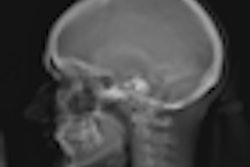Researchers in California are warning that future decreases in reimbursement for dual-energy x-ray absorptiometry (DEXA) could lead to an increase in hip fractures among senior citizens.
The study, led by Dr. Alka Mithal, a primary care physician and epidemiologist at the Institute of Clinical Outcomes Research and Education (ICORE) in Palo Alto, analyzed nontraumatic hip fractures in the U.S. from 1988 to 2005 among patients 50 years and older and correlated the data with screening programs, treatment efforts, and Medicare reimbursement.
Researchers used the Nationwide Inpatient Sample, which collects data randomly from U.S. community hospitals, and excluded hospitalizations with evidence of major trauma, open fractures, or primary or secondary femoral tumors.
Presented at the 2008 American College of Rheumatology (ACR) annual meeting in San Francisco, the study tallied 5.2 million hospitalizations for nontraumatic hip fractures among 1.3 billion patient-years of observation. Women accounted for 76% of the nontraumatic hip fractures.
Patient hospitalizations
In the 18-year review, the overall prevalence of hip fracture hospitalizations fell by approximately 23%, from 428.1 per 100,000 patients in 1988 to 328.1 in 2005. In women, prevalence rates remained relatively stable from 1988 to 1996, and then began to decrease from 635.9 per 100,000 patients in 1996 to 437.3 in 2004.
The decline in nontraumatic hip fractures among women coincided with the approval of the first bisphosphonate for osteoporosis treatment in 1995 and the Bone Mass Measurement Act of 1998, which mandated osteoporosis screening benefits for women.
The act also resulted in a significant increase in DEXA Medicare claims from 1994 to 2004. Claims increased from 77,133 in 1994 to 1.3 million in 1996, and nearly doubled to 2.4 million in 2004. DEXA Medicare claims peaked at 2.6 million in 2006. In the first quarter of 2008, there were 450,128 claims, compared with 447,934 in the first quarter of 2006.
In the study, the researchers concluded that both the Bone Mass Measurement Act and the availability of bisphosphonate helped to encourage osteoporosis screening, prevention, and treatment from 1996 to 1998 and, likely, led to the decline in hip fractures.
Lower reimbursement
The researchers warned that decreasing Medicare payments for DEXA exams, which have declined from approximately $140 to approximately $30 in recent years, could lead to less DEXA screening and assessment, potentially reversing the decline in nontraumatic hip fractures among men and women older than age 50.
"Whether or not [reduced reimbursement] has had any sizable impact on hip fractures yet we don't know, because that data is not available yet," said Dr. Gurkirpal Singh, study co-author and adjunct professor of medicine and gastroenterology at Stanford University School of Medicine.
Men versus women
One unanticipated finding from the study is that women exhibited a greater decrease in hip fracture hospitalization by 2005 compared to men, Singh said.
"Osteoporosis has been considered just a disease of women, without much attention being paid to men, though men tend to get hip fractures later in life," he added. "The evidence between the [men and women] is about five years about 10 years ago. Now the difference is about 3.5 years, so men and women are closing the gap."
The narrowing of the gap between the sexes may be due, in part, to a lack of research on men with osteoporosis and the absence of U.S. Surgeon General guidelines on screening in men, according to Singh. In addition, the availability of bone density screening to all women older than age 65 has not been given to men, although the hip fracture rate in 70-year-old men is the same as in 65-year-old women.
The researchers concluded that the drop in nontraumatic hip fracture hospitalizations among elderly women paralleled the widespread use of screening, prevention, and treatment, beginning in 1996.
As the growth of screening efforts has slowed, so has the decline in hip fracture prevalence, and future federally mandated decreases in reimbursement would result in less screening, reduced early diagnosis and treatment, and an increase in hip fracture hospitalizations.
By Wayne Forrest
AuntMinnie.com staff writer
November 20, 2008
Related Reading
Simple test predicts osteoporosis risk in men, December 7, 2007
Rate of second hip fractures high in older men and women, October 26, 2007
Older men may benefit from osteoporosis screening -- at a reasonable cost, August 7, 2007
Decision rules useful for selecting women for bone mineral density testing, August 1, 2007
Hip fracture risk high among older patients with diabetes, April 10, 2007
Copyright © 2008 AuntMinnie.com



















